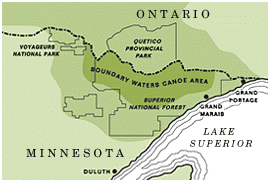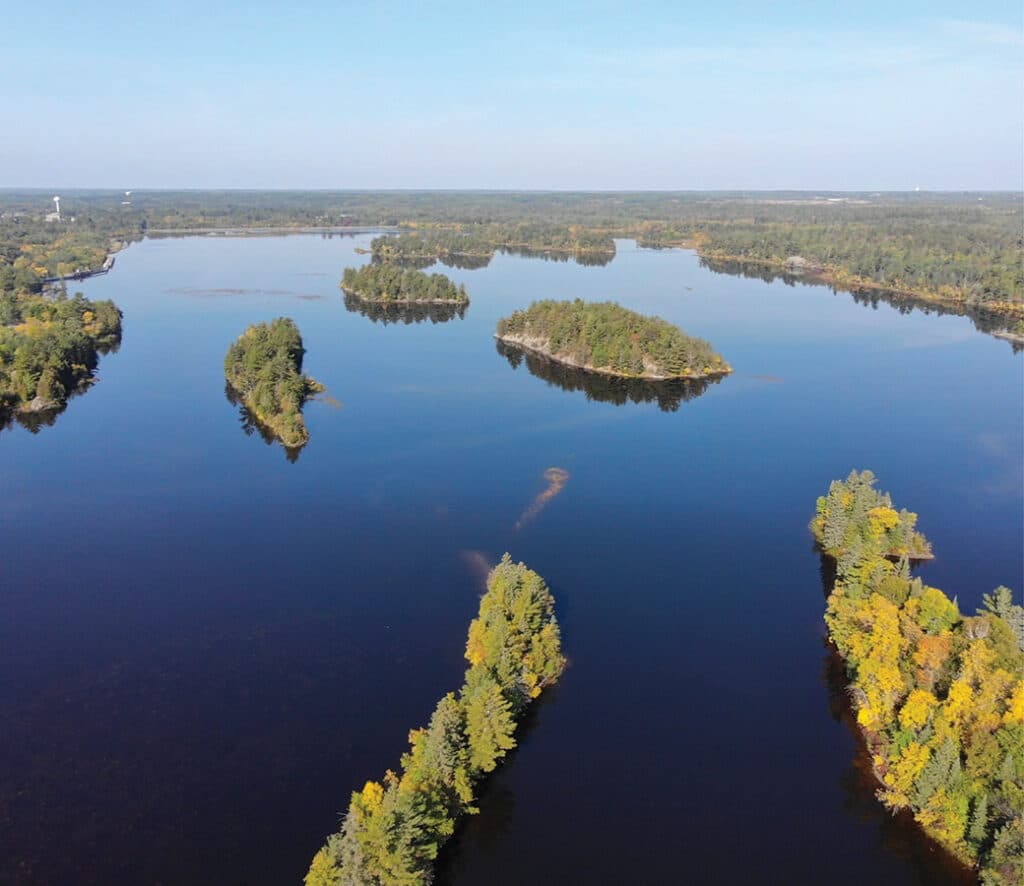
Federal, state, and local crews are actively cleaning up areas of environmental contamination on the Thomson Reservoir. This reservoir, which is part of the St. Louis River, plays a central role in a broader effort to repair historic industrial pollution that has long plagued the watershed and the largest river feeding into Lake Superior.
Project aims to reduce toxins
Crews resumed work this year on the Thomson Reservoir sediment remediation project, which began last summer. The project aims to enhance aquatic habitats and reduce levels of toxic chemicals. Workers are restoring 225,000 cubic yards of contaminated sediment spread across 69.5 acres.
The reservoir lies west of Duluth and drains into the St. Louis River. Minnesota Power owns and operates a hydroelectric water-level control dam, built in 1908, that caps the 330-acre reservoir. The Environmental Protection Agency (EPA) has listed this site as the second most critical Area of Concern in the Great Lakes.
Researchers have found elevated levels of dioxins and furans throughout the sediment. These toxic chemicals, byproducts of historic industrial activity, originated primarily from pulp and paper manufacturing facilities upstream, industries that operated before the enforcement of modern environmental regulations. Combustion activities like burning coal, wood, or petroleum products also release furans. Both chemicals are linked to cancer and reproductive problems.
These toxins accumulate in aquatic insects and crustaceans such as crayfish and clams. As larger animals eat these organisms, the chemicals concentrate in fatty tissue. According to the EPA, humans are primarily exposed to these toxins through the consumption of fatty tissue in dairy, meat, fish, and shellfish.
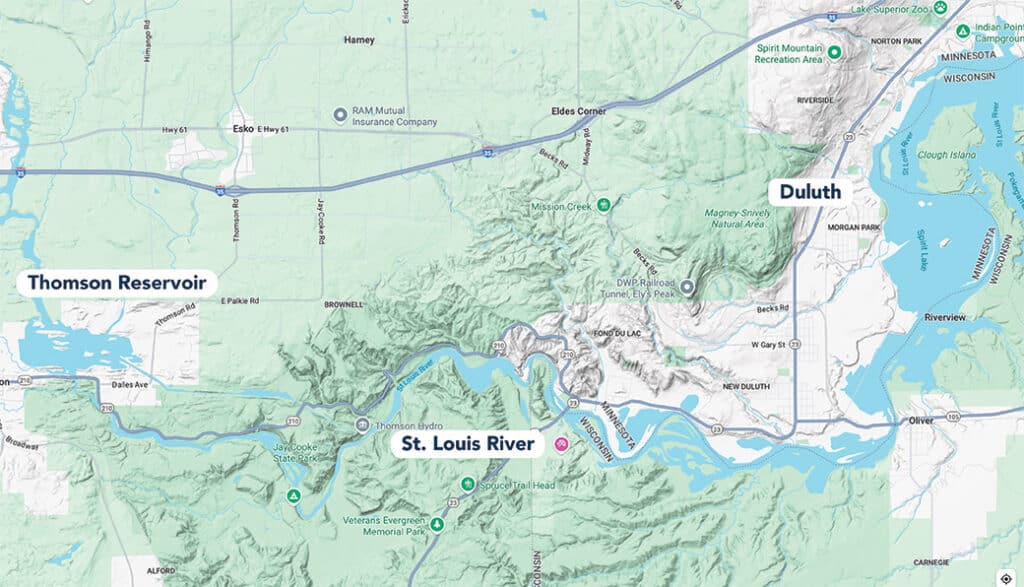
Multi-year project
The cleanup began in summer 2024 and has now entered its second and final phase. The EPA has begun placing 8,100 tons of activated charcoal pellets in the watershed. These pellets form a one- to two-inch layer on the sediment floor, where their porous structure absorbs pollutants embedded in the river system. This action significantly reduces the concentration of dioxins and furans from moving up the food chain.
“Our targets here really are those bugs and the fish,” said LaRae Lehto, a contaminated sediment program coordinator for the Minnesota Pollution Control Agency. “So we’re looking at the chemistry, the contaminants, and how they move through the food chain,” she told the Pine Journal.
The St. Louis River, which is a National Water Trail, has long played a vital role in the lives of those who live and work along its shorelines. It connects to the Port of Duluth-Superior, a key artery for Great Lakes shipping, and supports a critical fish spawning habitat. The Fond du Lac Tribe, which has lived in the region for centuries, considers this watershed culturally significant.
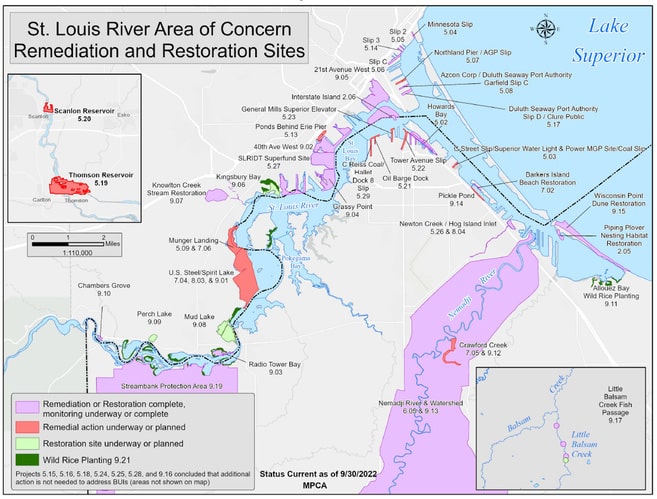
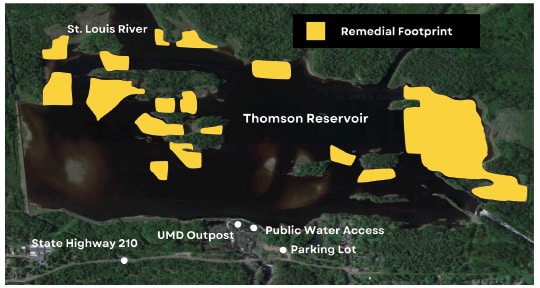
Authorities have identified multiple sites, including the Thomson Reservoir within the greater Duluth area, as remediation and restoration sites. (Maps courtesy Great Lakes Legacy Act / GLNPO / MPCA / partners)
Remediation is nearly finished
According to the EPA, 80 management actions are required to remove the St. Louis River from the list of Great Lakes Areas of Concern. Just over half of those actions involve sediment remediation and habitat restoration, and crews have already completed half of those projects.
As part of this effort, officials aim to restore at least 1,700 acres, or 50% of degraded aquatic habitat.
“From a broader perspective, the more of these immediate projects we complete to remove contamination left behind from historic industrial discharges, the greater the benefit to the Great Lakes overall,” said Meaghan Kern, technical lead and project manager with the EPA, in an interview with the news.
The $36 million project is on track to finish later this year. Funding comes from a Great Lakes Legacy Act partnership involving the Minnesota Pollution Control Agency, the EPA, and PotlatchDeltic.
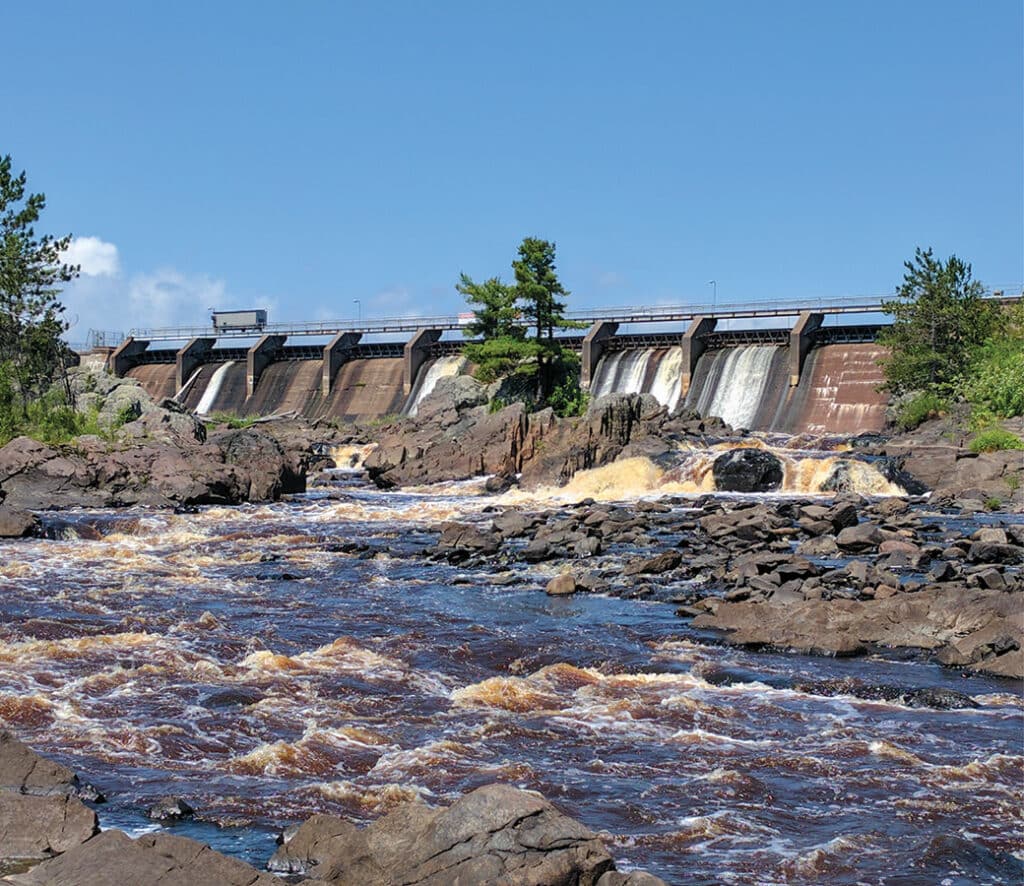
More info:
- MPCA releases assessment of Thomson Reservoir project in St. Louis River Area of Concern – Minnesota Pollution Control Agency
- Thomson Reservoir – St. Louis River Area of Concern – Great Lakes Mud
- EPA Deputy Administrator Announces $35 Million Sediment Cleanup to Restore St. Louis River in Minnesota – Environmental Protection Agency
- St. Louis River AOC – Environmental Protection Agency
- World’s largest environmental cleanup of its kind resumes on St. Louis River – Cloquet Pine Journal

